دوره 14، شماره 4 - ( زمستان 1402 )
جلد 14 شماره 4 صفحات 41-33 |
برگشت به فهرست نسخه ها
Download citation:
BibTeX | RIS | EndNote | Medlars | ProCite | Reference Manager | RefWorks
Send citation to:



BibTeX | RIS | EndNote | Medlars | ProCite | Reference Manager | RefWorks
Send citation to:
Rezaei H, Kargar S. (2023). Effect of Milk Replacer Plane of Nutrition on Intake, Weight Gain, and Skeletal Growth in Cold-Stressed Newborn Holstein Calves. Res Anim Prod. 14(4), 33-41. doi:10.61186/rap.14.42.33
URL: http://rap.sanru.ac.ir/article-1-1344-fa.html
URL: http://rap.sanru.ac.ir/article-1-1344-fa.html
رضایی حسن، کارگر شهریار.(1402). اثر سطح تغذیه جایگزین شیر بر مصرف مواد مغذی ، افزایش وزن و رشد اسکلتی در گوسالههای شیرخوار هلشتاین تحت تنش سرمایی پژوهشهاي توليدات دامي 14 (4) :41-33 10.61186/rap.14.42.33
1- گروه علوم دامی، دانشکده کشاورزی، دانشگاه شیراز، شیراز، ایران
چکیده: (2104 مشاهده)
مقدمه و هدف: حد پایین دمای بحرانی برای گوسالههای تازه متولد شده در دامنه بین 5 (از سه هفتگی به بعد) تا 15 (تا سه هفتگی) درجه سانتیگراد گزارش شده است. وقتی دمای هوا به کمتر از حد پایین دمای بحرانی میرسد، گوساله برای حفظ دمای بدن به انرژی بیشتری نیاز پیدا میکند. از این روی، هدف اصلی از انجام این پژوهش بررسی اثر سطح تغذیه جایگزین شیر بر مصرف، افزایش وزن و رشد اسکلتی در گوسالههای تازه متولد شده هلشتاین تحت تنش سرمایی بود.
مواد و روشها: بیست و چهار گوساله تازه متولد شده هلشتاین به طور تصادفی به دو گروه مساوی دریافت کننده سطح محدود (چهار لیتر در روز) یا سطح متوسط (شش لیتر در روز) جایگزین شیر اختصاص داده شدند. گوسالهها 61 روز پس از شروع آزمایش از شیر گرفته شده و تا 91 روزهگی در طرح بودند. جایگزین شیر مصرفی، خوراک آغازین مصرفی و دمای هوا روزانه ثبت شد. وزن بدن پیش از شروع آزمایش و هر ده روز پس از آن اندازهگیری شد. میانگین افزایش وزن روزانه (گرم افزایش وزن در روز) از تفاضل وزن بدن گوساله ثبت شده در فواصل ده روزه تقسیم بر عدد ده به دست آمد. اندازه اسکلت بدن در زمان شروع آزمایش، در زمان شیرگیری و انتهای دوره آزمایش اندازهگیری شد.
یافتهها: مواد مغذی مصرفی از خوراک مایع در گوسالههای تغذیه شده با سطح متوسط جایگزین شیر در دوره پیش از شیرگیری بیشتر بود؛ به هر حال، مواد مغذی مصرفی از خوراک آغازین و نیز کل مواد مغذی مصرفی (به جز چربی خام و انرژی قابل سوخت و ساز) در دوره پیش و پس از شیرگیری تحت تأثیر گروههای تیماری قرار نگرفت. میانگین افزایش وزن روزانه در گوسالههای تغذیه شده با سطح متوسط جایگزین شیر بیشتر بود. میزان افزایش در وزن بدن در دوره پیش و پس از شیرگیری و در کل دوره آزمایش در گوسالههای تغذیه شده با سطح متوسط جایگزین شیر بیشتر بود. ارتفاع جدوگاه (در انتهای دوره آزمایش)، دور شکم (در زمان شیرگیری و در انتهای دوره آزمایش)، ارتفاع هیپ (پیش از شیرگیری و در کل دوره آزمایش) و عرض هیپ (پس از شیرگیری و در کل دوره آزمایش) رشد بیشتری در گوسالههای تغذیه شده با سطح متوسط جایگزین شیر داشت.
نتیجهگیری: تغییر سطح تغذیه جایگزین شیر تأثیری بر خوراک آغازین مصرفی در دوره پیش و پس از شیرگیری نداشت اما گوسالههای تغذیه شده با سطح متوسط جایگزین شیر رشد وزنی و اسکلتی بیشتری داشتند. در کل، تغذیه سطح متوسط جایگزین شیر به گوسالههای شیرخوار هلشتاین در شرایط تنش سرمایی توصیه میشود.
مواد و روشها: بیست و چهار گوساله تازه متولد شده هلشتاین به طور تصادفی به دو گروه مساوی دریافت کننده سطح محدود (چهار لیتر در روز) یا سطح متوسط (شش لیتر در روز) جایگزین شیر اختصاص داده شدند. گوسالهها 61 روز پس از شروع آزمایش از شیر گرفته شده و تا 91 روزهگی در طرح بودند. جایگزین شیر مصرفی، خوراک آغازین مصرفی و دمای هوا روزانه ثبت شد. وزن بدن پیش از شروع آزمایش و هر ده روز پس از آن اندازهگیری شد. میانگین افزایش وزن روزانه (گرم افزایش وزن در روز) از تفاضل وزن بدن گوساله ثبت شده در فواصل ده روزه تقسیم بر عدد ده به دست آمد. اندازه اسکلت بدن در زمان شروع آزمایش، در زمان شیرگیری و انتهای دوره آزمایش اندازهگیری شد.
یافتهها: مواد مغذی مصرفی از خوراک مایع در گوسالههای تغذیه شده با سطح متوسط جایگزین شیر در دوره پیش از شیرگیری بیشتر بود؛ به هر حال، مواد مغذی مصرفی از خوراک آغازین و نیز کل مواد مغذی مصرفی (به جز چربی خام و انرژی قابل سوخت و ساز) در دوره پیش و پس از شیرگیری تحت تأثیر گروههای تیماری قرار نگرفت. میانگین افزایش وزن روزانه در گوسالههای تغذیه شده با سطح متوسط جایگزین شیر بیشتر بود. میزان افزایش در وزن بدن در دوره پیش و پس از شیرگیری و در کل دوره آزمایش در گوسالههای تغذیه شده با سطح متوسط جایگزین شیر بیشتر بود. ارتفاع جدوگاه (در انتهای دوره آزمایش)، دور شکم (در زمان شیرگیری و در انتهای دوره آزمایش)، ارتفاع هیپ (پیش از شیرگیری و در کل دوره آزمایش) و عرض هیپ (پس از شیرگیری و در کل دوره آزمایش) رشد بیشتری در گوسالههای تغذیه شده با سطح متوسط جایگزین شیر داشت.
نتیجهگیری: تغییر سطح تغذیه جایگزین شیر تأثیری بر خوراک آغازین مصرفی در دوره پیش و پس از شیرگیری نداشت اما گوسالههای تغذیه شده با سطح متوسط جایگزین شیر رشد وزنی و اسکلتی بیشتری داشتند. در کل، تغذیه سطح متوسط جایگزین شیر به گوسالههای شیرخوار هلشتاین در شرایط تنش سرمایی توصیه میشود.
فهرست منابع
1. Ames, D. (1980). Thermal environment affects production efficiency of livestock. BioScience, 30(7), 457-460. [DOI:10.2307/1307947]
2. Ansari, M., Kargar, S., Eslami, M. A., Falahati, R., Albenzio, M., Caroprese, M., Zamiri, M. J., & Kanani. M. (2022). Potential benefits of early-life supplementation of liquid feed with fennel (Foeniculum vulgare) seeds or oregano (Origanum vulgare) leaves on growth, health, and blood metabolites in Holstein dairy calves. Journal of Dairy Science, 105, 6639-6653.
https://doi.org/10.3168/jds.2022-21776 [DOI:10.3168/jds.2022-21776.]
3. AOAC International. (2002). Official Methods of Analysis. 17th ed. AOAC International.
4. Arieli, A., Schrama, J. W., Van-Der-Hel, W., & Verstegen, M. W. A. (1995). Development of metabolic partitioning of energy in young calves. Journal of Dairy Science, 78, 1154-1162. [DOI:10.3168/jds.S0022-0302(95)76732-7]
5. de Passille, A. M., Rabeyrin, M., & Rushen, J. (2016). Associations between milk intake and activity in the first days of a calf's life and later growth and health. Applied Animal Behaviour Science, 175, 2-7. [DOI:10.1016/j.applanim.2014.10.002]
6. Drackley, J. K. (2008). Calf nutrition from birth to breeding. Veterinary Clinics of North America: Food Animal Practice, 24(1), 55-86. [DOI:10.1016/j.cvfa.2008.01.001]
7. Gelsinger, S. L., Heinrichs, A. J., & Jones. C. M. (2016). A meta-analysis of the effects of preweaned calf nutrition and growth on first-lactation performance. Journal of dairy science, 99(8), 6206-6214. [DOI:10.3168/jds.2015-10744]
8. Gerbert, C., Frieten, D., Koch, C., Dusel, G., Eder, K., Stefaniak, T., Bajzert, J., Jawor, P., Tuchscherer, A., & Hammon, H. M. (2018). Effects of ad libitum milk replacer feeding and butyrate supplementation on behavior, immune status, and health of Holstein calves in the postnatal period. Journal of Dairy Science, 101(8), 7348-7360. [DOI:10.3168/jds.2018-14542]
9. Holt, S. D. (2014). Ambient temperature, calf intakes, and weight gains on preweaned dairy calves. Utah State University.
10. Kargar, S., Nowroozinia, F., & Kanani, M. (2021). Feeding fennel (Foeniculum vulgare) seed as potential appetite stimulant to newborn Holstein dairy calves: Effects on meal pattern, ingestive behavior, oro-sensorial preference, and feed sorting. Animal Feed Science and Technology, 278, 115009. [DOI:10.1016/j.anifeedsci.2021.115009]
11. Khan, M. A., Lee, H. J., Lee, W. S., Kim, H. S., Ki, K. S., Hur, T. Y., Suh, G. H., Kang, S. J., & Choi, Y. J. (2007). Structural growth, rumen development, and metabolic and immune responses of Holstein male calves fed milk through step-down and conventional methods. Journal of Dairy Science, 90(7), 3376-3387. [DOI:10.3168/jds.2007-0104]
12. Nonnecke, B. J., Foote, M. R., Miller, B. L., Fowler, M., Johnson, T. E., & Horst, R. L. (2009). Effects of chronic environmental cold on growth, health, and select metabolic and immunologic responses of preruminant calves. Journal of Dairy Science, 92(12), 6134-6143. [DOI:10.3168/jds.2009-2517]
13. NRC. (2001). Nutrient Requirements of Dairy Cattle. 7th rev. ed. Natl. Acad. Sci.
14. Ollivett, T. L., Nydam, D. V., Linden, T. C., Bowman, D. D., & Van Amburgh, M. E. (2012). Effect of nutritional plane on health and performance in dairy calves after experimental infection with Cryptosporidium parvum. Journal of the American Veterinary Medical Association, 241(11), 1514-1520. [DOI:10.2460/javma.241.11.1514]
15. Olson, D. P., Papasian, C. J., & Ritter, R. C. (1980). The effects of cold stress on neonatal calves: I. Clinical condition and pathological lesions. Canadian Journal of Comparative Medicine, 44(1), 11-18.
16. Raeth-Knight, M., Chester-Jones, H., Hayes, S., Linn, J., Larson, R., Ziegler, D., ... & Broadwater, N. (2009). Impact of conventional or intensive milk replacer programs on Holstein heifer performance through six months of age and during first lactation. Journal of Dairy Science, 92(2), 799-809. [DOI:10.3168/jds.2008-1470]
17. Rosenberger, K., Costa, J. H. C., Neave, H. W., Von Keyserlingk, M. A. G., & Weary, D. M. (2017). The effect of milk allowance on behavior and weight gains in dairy calves. Journal of Dairy Science, 100(1), 504-512. [DOI:10.3168/jds.2016-11195]
18. Silper, B. F., Lana, A. M. Q., Carvalho, A. U., Ferreira, C. S., Franzoni, A. P. S., Lima, J. A. M., ... & Coelho, S. G. (2014). Effects of milk replacer feeding strategies on performance, ruminal development, and metabolism of dairy calves. Journal of dairy science, 97(2), 1016-1025. [DOI:10.3168/jds.2013-7201]
19. Soberon, F., Raffrenato, E., Everett, R. W., & Van Amburgh, M. E. (2012). Preweaning milk replacer intake and effects on long-term productivity of dairy calves. Journal of Dairy Science, 95(2), 783-793. [DOI:10.3168/jds.2011-4391]
20. Van Soest, P. V., Robertson, J. B., & Lewis, B. A. (1991). Methods for dietary fiber, neutral detergent fiber, and nonstarch polysaccharides in relation to animal nutrition. Journal of dairy science, 74(10), 3583-3597. [DOI:10.3168/jds.S0022-0302(91)78551-2]
21. Young, B. A. (1981). Cold stress as it affects animal production. Journal of animal science, 52(1), 154-163. [DOI:10.2527/jas1981.521154x]
22. Young, B. A. (1983). Ruminant cold stress: Effect on production. Journal of Animal Science, 57(6), 1601-1607. [DOI:10.2527/jas1983.5761601x]
ارسال پیام به نویسنده مسئول
| بازنشر اطلاعات | |
 |
این مقاله تحت شرایط Creative Commons Attribution-NonCommercial 4.0 International License قابل بازنشر است. |





